A Holiday Gift to the Planet from the Outback

By John Agar, Oz Townsend, Kate Stewart, Margot Hurwitz, and Sarah Brown
A very cool dialysis thing is happening in the hot centre of Australia. You may know it as the Outback: a massive tract of largely uninhabited desert in the centre of this amazing island continent we call home, where very few people live. Apart from the town of Alice Springs, only a handful of tiny, scattered aboriginal (indigenous) communities are to be found.
This map shows a small part of Outback Australia, a desert vastness of about 350,000 sq.km in area almost the same as Germany (357,000 sq.km) or Montana (381,000 sq.km). Except for ‘the Alice’—as Alice Springs is known here—the total known population of this wild and beautiful region of Australia (represented by the inset on map) is ~2,600 people. These almost exclusively indigenous peoples—with an incidence of kidney failure some 20 times that of all other Australians—live in or around the 10 communities marked by blue dots on the map.
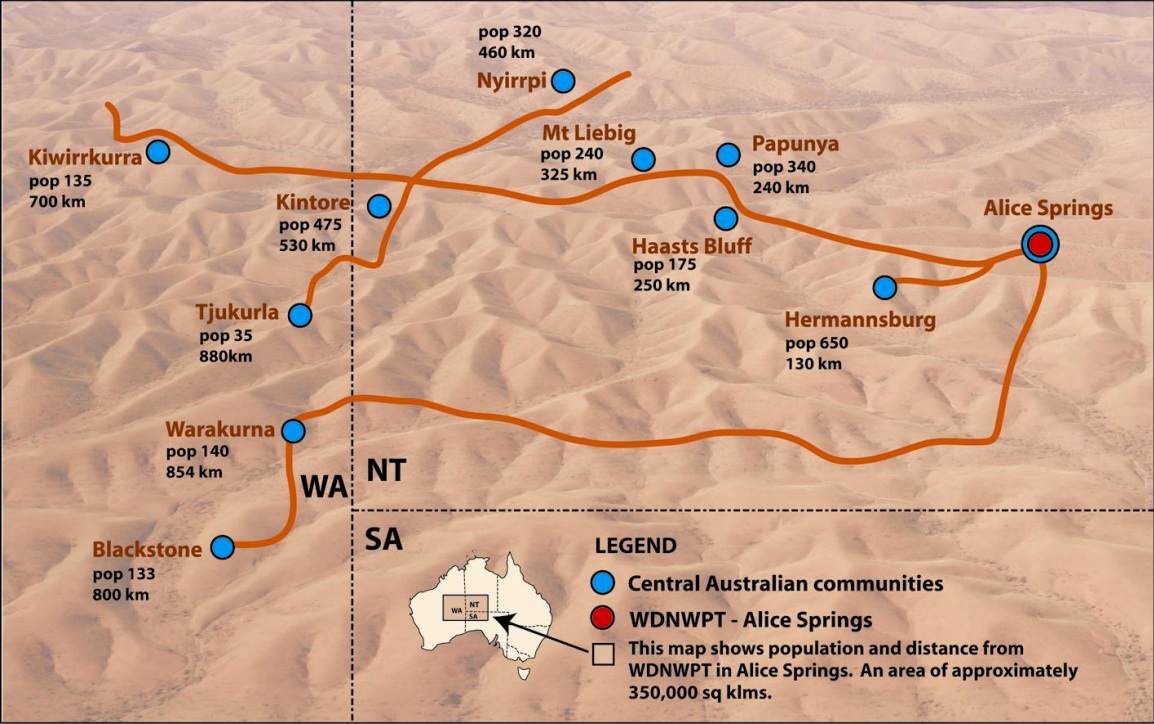
Although doctors and a hospital are only found in Alice Springs, or via the over-stretched Flying Doctor Service, home or “community” dialysis is available—and successfully, too—in several of these communities. One such community providing dialysis is Kiwirrkurra (or, strictly, Kiwirrkura). The following quotation comes from the Kiwirrkurra website:
“Kiwirrkurra is located in the “tali” (sandhill) country of the Gibson Desert, to the south west of Lake McKay…It has been described as the most remote community in Australia.”
So … what is the cool ‘dialysis thing’ going on out there at Kiwirrkurra? Well…apart from the minor miracle of providing, resourcing, supplying, sustaining, and supporting dialysis in this remote region with the help of hard-won philanthropy, the amazing nurses and carers who live and work out there, and the indigenous patients whom they dialyse, they have set up a sustainable dialysis system that also helps feed their community, provide local jobs and, as an incidental benefit, has created a tempting water-play option for their children, all in one of the driest places on earth .
Their innovative, do-it-yourself re-use system for R/O reject water is beautiful in its simplicity. Moreover, it should cause the rest of us to pause and question why the collective creativity and inventiveness of our global dialysis community has so clearly deserted us .
Water is far more precious than gold in the outback . The water used for dialysis comes from deep underground as “bore water,” obtained by drilling into the Great Artesian Basin (the world’s largest subterranean aquifer), but it is very hard water and is contaminated with calcium and magnesium salts, among others. It needs considerable additional softening with lime softeners before it can be safely presented to the RO system: a costly added step in outback dialysis water preparation. After the R/O process, the RO reject water (about 2/3rds of the presented volume) is not sent to a drain but is captured and recycled for other uses, as you will see . First, a hole is drilled through the wall of the corrugated iron shed in which dialysis is delivered.
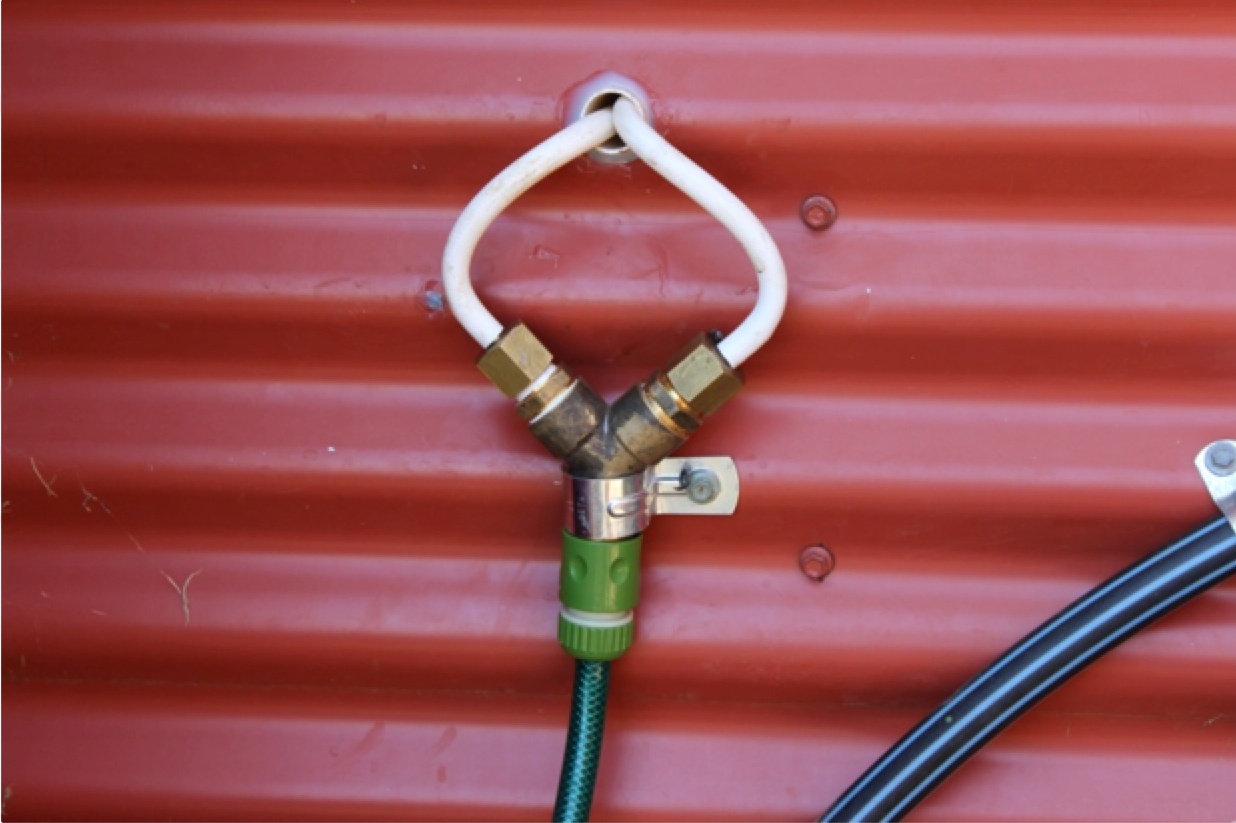
The outflow pipes from the R/O system inside then deliver reject water into a big open plastic tank. The tank 2/3rds fills each day and is the primary collection vat for the dialysis reject water…as well as a tempting, cool-off-in-the-heat water supply for the local kids! While swimming in the tank has, to date, not been permitted, the temptation remains and, down the track, may yet formally eventuate.

A submersible pump in the bottom of the tank (like those used in fish ponds) is connected to a length of PVC garden hose to fill a number of smaller, transportable containers.
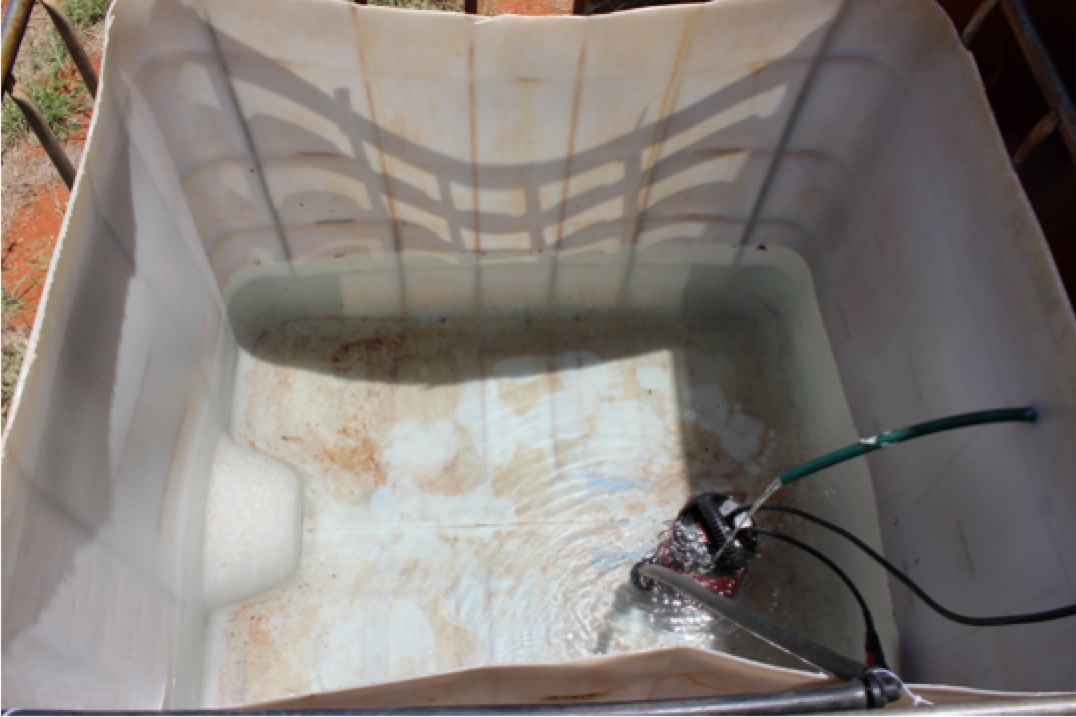
These containers are then loaded by forklift to a truck that distributes them to local residential vegetable plots and the women’s centre food trees .

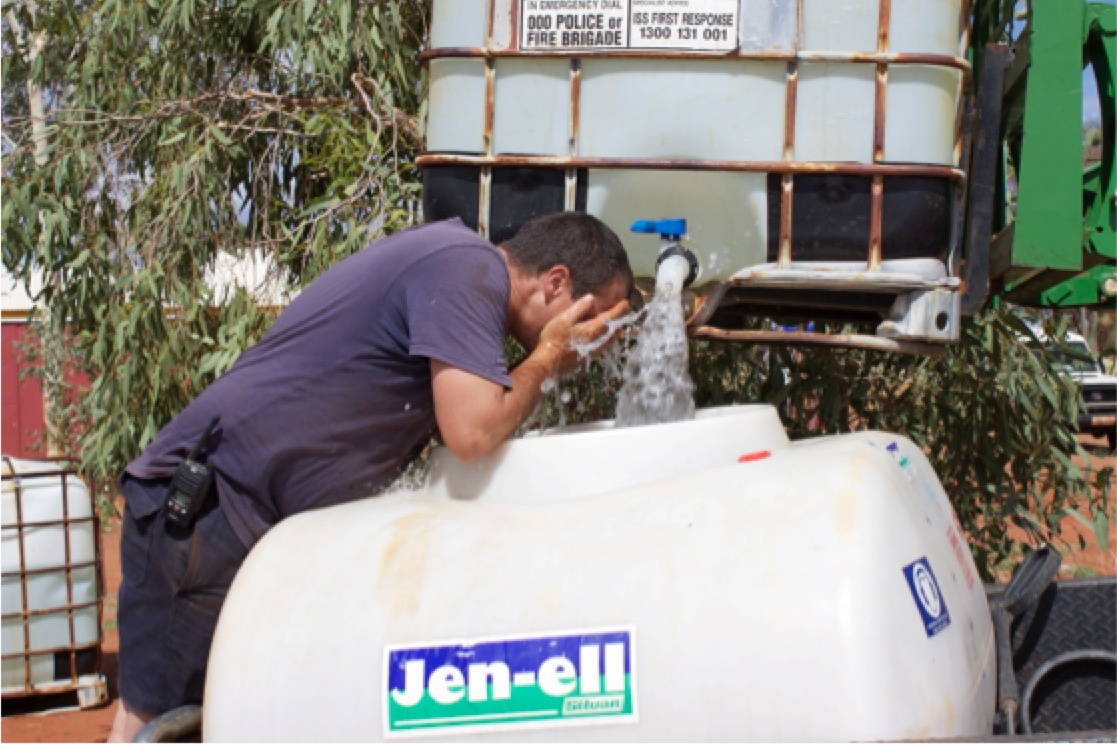
Now, there is regular water for cultivating “bush tucker” (Australian slang for native edible plants—see photo below), where there had been none. There are some persisting cultural misconceptions that RO reject water is somehow “tainted” by illness, but there is an active education program underway to correct this.
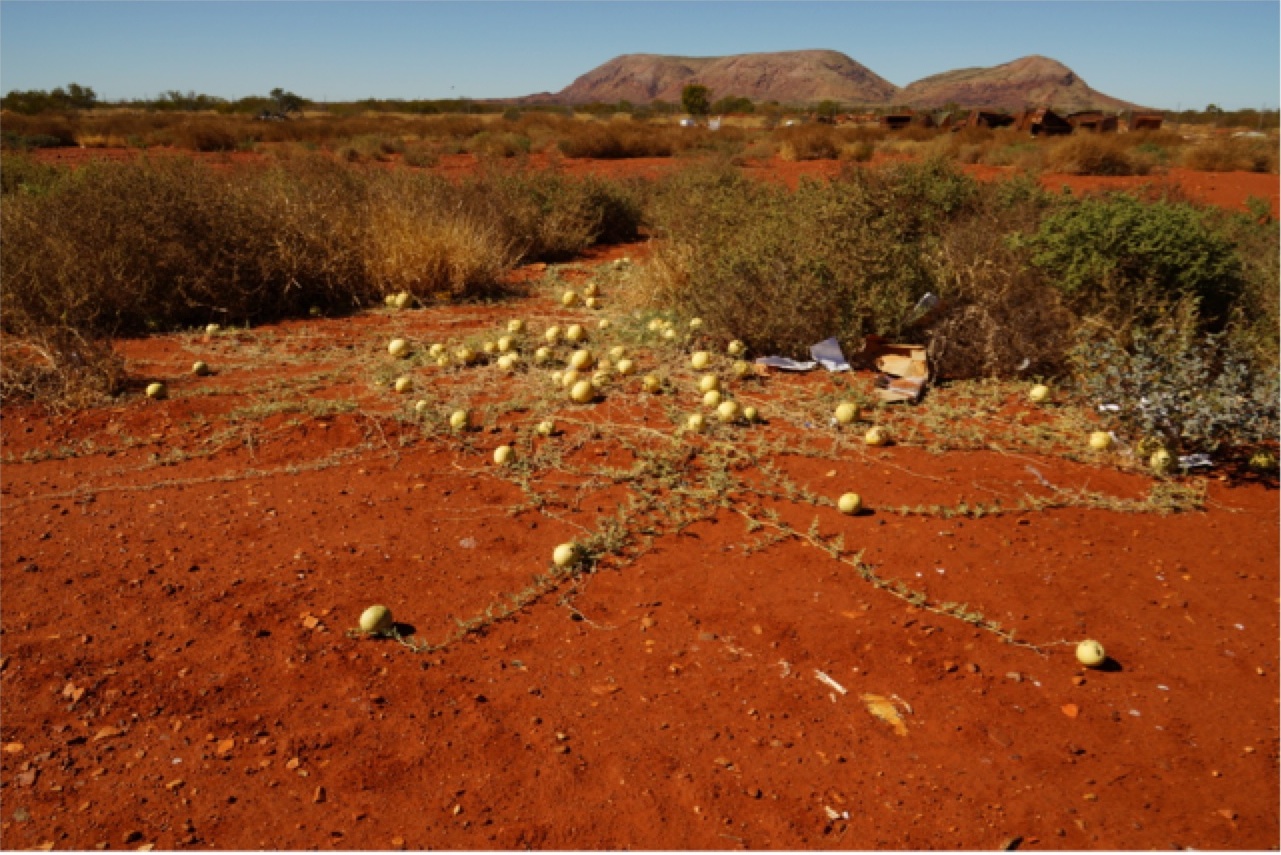
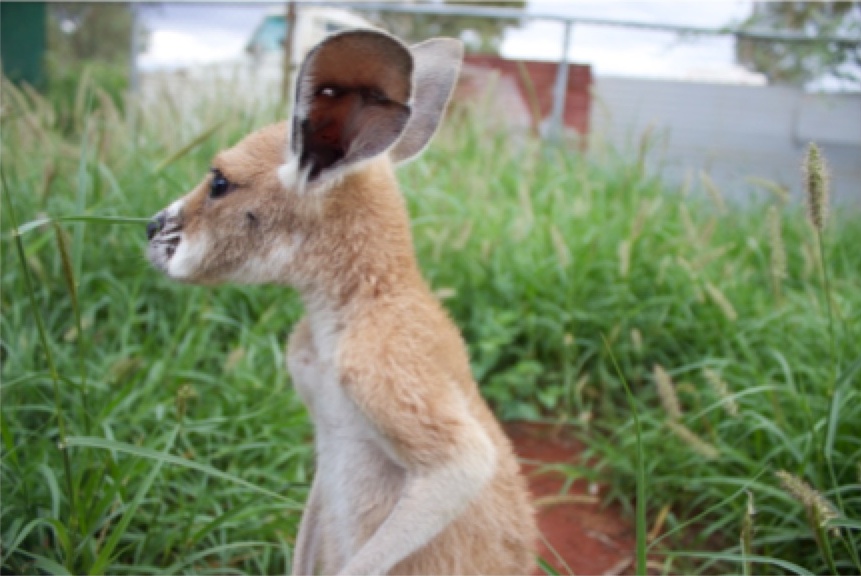 The tank is mesh-protected to keep children from playing in it, largely from fear that they might damage the pump. But, dunking places are sorely needed
for kids to cool off under the baking sun, where temperatures regularly exceed 45 (~115˚F) in the Outback summer between October and March. To this end,
there are already some do-it-yourself swimming pools in the community, where RO reject water could add immeasurable volume and value. And, there is water
for local fauna to drink— like Marlu, Oz and Kate’s pet kangaroo!
The tank is mesh-protected to keep children from playing in it, largely from fear that they might damage the pump. But, dunking places are sorely needed
for kids to cool off under the baking sun, where temperatures regularly exceed 45 (~115˚F) in the Outback summer between October and March. To this end,
there are already some do-it-yourself swimming pools in the community, where RO reject water could add immeasurable volume and value. And, there is water
for local fauna to drink— like Marlu, Oz and Kate’s pet kangaroo!
The introduction of water recycling is boosting local employment. Kiwirrkurra has a high number of RJCP (remote jobs in community program) workers. The RJCP, or “work for the dole,” is a program where the government pays a wage for a set number of hours of community work each week. Local aboriginal council elders struggle to find enough meaningful and useful ways for their local RJCP workers to make up the mandatory hours to qualify for a paid wage.
So, in many ways, it is dialysis R/O reject water to the rescue!
The dialysis team is still fine-tuning cultural acceptance. Meanwhile, water allocation, potential uses and container distribution through the community, draining of the main tank into multiple smaller water containers, subsequent delivery of these containers by tractor forklift to elevated stands beside each vegetable garden and the women’s food trees, and the gravity-fed watering that results, are great ways to provide for a working day!
It is proving to truly be a win-win situation.
This story is only one of the many smart, simple, inexpensive, yet innovative projects around this country that are slowly converting dialysis from a purely medical exercise into a value-adding contributor to the communities in which it is delivered .
So…well done to Oz Townsend and Kate Stewart in Kiwirrkurra. Well done to Sarah Brown in “the Alice.” Well done to the community of Kiwirrkurra in the Gibson Desert of Western Australia, 1,200 km to the east of Port Hedland, and 700 km by red-dirt road to the west of Alice Springs. Well done to Kiwirrkurra’s nearest sister community, Kintore, 100 km to the east, as well, where water, solar-assistance and dialysis are being joined as one, and a similar water re-use and RJCP proposal has been submitted to the council of elders.
Above all, well done to the indigenous dialysis patients who, despite the many cultural uncertainties that a few in their communities still harbour, have been willing to have a go and create the tracks that, one day, others of us may follow. And, happy holidays to you—and to planet earth!
(Other information on the way dialysis is provided in ‘outback’ Central Australia can be found at: http://www.westerndesertdialysis.com/)


Comments
John Agar
Jan 01, 2015 5:58 AM
Saviline
Dec 29, 2014 5:43 AM
I really enjoyed working there.
Thank you for bringing this up.Amazing!
Tami
Dec 28, 2014 7:19 PM
Jacqueline Mordaunt
Dec 28, 2014 5:18 AM
Lana Schmidt
Dec 26, 2014 4:06 PM
Lorraine dubois
Dec 26, 2014 5:54 AM